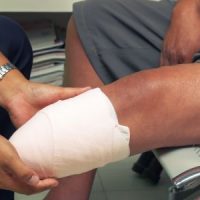Do You Work with Machines in Louisiana? If So, Be Aware of these 7 Amputation Hazards in Your Workplace

There is no doubt that amputation injuries are some of the worst workplace injuries that a Louisiana worker can suffer on the job. Indeed, a workplace amputation injury is an injury in which a worker’s body part is partially or completely removed from his or her body, often affecting arms, legs, or digits such as fingers and toes. Workplace amputation injuries can certainly disable a worker from being able to work their regular job, and can significantly impact a worker’s activities of daily living. Workers who work with heavy machinery are at a heightened risk of amputation injuries, due to the nature of working at high speeds and with sharp and powerful equipment. But why is working with machines in Louisiana so dangerous and what specific machine components may lead to a workplace amputation injury? To help Louisiana workers better understand just how dangerous working with machines can be, and the risk of suffering an amputation injury, we provide those answers here.
7 Machine Components that Provide Amputation Risks in Louisiana Workplaces
According to the Occupational Safety and Health Administration (OSHA), there are seven top machine components that present a risk of amputation injury to workers. These 7 machine component amputation hazards include the following:
- Power-transmission apparatuses: OSHA explains that “flywheels, pulleys, belts, chains, couplings, spindles, cams and gears in addition to connecting rods” and other parts of a machine that transmit energy are a top amputation hazard for workers who work with machines on the job;
- Point of operation: according to OSHA, the area or place where the machine actually works on the material being used by the worker is another machine component that can cause amputation injuries;
- Bending: bending with heavy machinery typically involves the machine’s power being applied to bend or form materials like metal;
- Punching: when a worker uses a machine to punch certain materials like metal, the point of the “punching” motion by the machine can cause an amputation injury if a limb or fingers enters the punching area;
- Cutting: of course, when a machine is used to cut material, the sawing or slicing action can be very dangerous and can cause an amputation injury;
- Shearing: like cutting, the action of shearing to trim materials, like metal, can slice a worker’s limb or digit off, causing an amputation injury; and
- Other moving parts of the machine: virtually any movement that a heavy machine makes can cause a risk of amputation to workers. As OSHA notes, “machine components that move during machine operation such as reciprocating, rotating, and transverse moving parts as well as auxiliary machine parts” can cause workplace amputation injuries.
Justice for Victims of Workplace Amputation Injuries
If you were injured in a workplace accident and suffered a debilitating amputation injury in Louisiana, it is important to know your rights and options to Louisiana workers’ compensation benefits. Contact the experienced Louisiana amputation lawyers at Lunsford Baskin & Priebe for a free and confidential consultation and speak to an experienced Louisiana workers’ compensation lawyer about your rights and options today.
